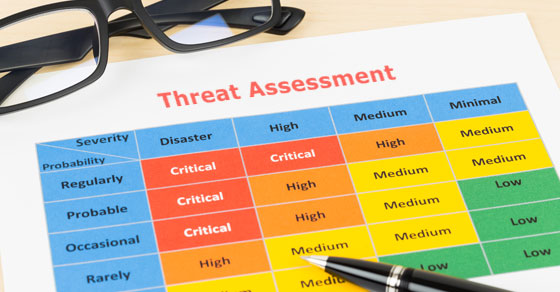
It’s a subject that most people don’t like to think about, but every employer must address. Workplace violence is an enormous threat to the physical, mental and psychological well-being of your employees. And just one incident can drastically lower the morale and productivity of an organization for a long time.
A costly problem
Finding exact data on the financial impact of workplace violence is difficult because many crimes other than homicides go unreported. A 2022 analysis by career information provider Zippia estimated that U.S. businesses lose an average of $250 billion to $330 billion annually to violent incidents. These costs arise from:
- Lost work time and wages,
- Reduced productivity and turnover,
- Higher health care costs,
- Workers’ compensation and disability insurance premiums, and
- Legal and security expenses.
As you’re no doubt aware, the federal Occupational Safety and Health Act requires employers to provide a workplace free from hazards that could cause harm or death — including violence. Some states and localities have related laws.
Threat assessment
The first step toward managing the risk is a threat assessment. Leadership needs to recognize the types of threats most likely to affect your workplace.
Sometimes, perpetrators have no direct relationship to the organization. Instead, violence occurs in conjunction with another criminal act, such as theft or vandalism. Other times, crimes are perpetrated by someone related to your company — typically current or former employees, contractors, or customers.
Violent behavior can also be directed toward one of your workers by someone unassociated with your organization but whom they know, such as an angry spouse, current or former romantic partner, or friend.
Specific steps
Many employers lack the internal resources to assess threats and minimize risks. If this applies to your organization, explore the costs and benefits of engaging a security consultant. A qualified advisor can conduct a formal threat assessment and work with you to identify and undertake specific steps to minimize situations that can lead to violence.
For instance, you might need to upgrade physical security systems by installing locks and fences, deploying guards, and implementing ID badges to limit access points for thieves, disgruntled former employees and contractors, or others intent on doing harm. In addition, if you haven’t already, you could install closed-circuit cameras and let everyone on your premises know that their actions won’t go unobserved or unrecorded.
Whether you work with an outside advisor or not, implement a workplace violence prevention policy that includes employee training and ways to report toxic behavior and potentially violent situations. The policy should prohibit weapons in the workplace and clarify that you reserve the right to search lockers or other areas.
Just as important are pre-employment processes to better ensure a nonhostile work environment. Start by screening all prospective employees and running background checks to identify those with histories of violence or criminal activity. (Work with your attorney to ensure background checks and employment verifications comply with applicable laws.)
Forewarned, forearmed
As the saying goes, “forewarned is forearmed.” We can help you measure productivity and evaluate the costs of better securing your workplace against likely threats.
© 2022
Checkpoint Marketing for Firms
THOMSON REUTERS

